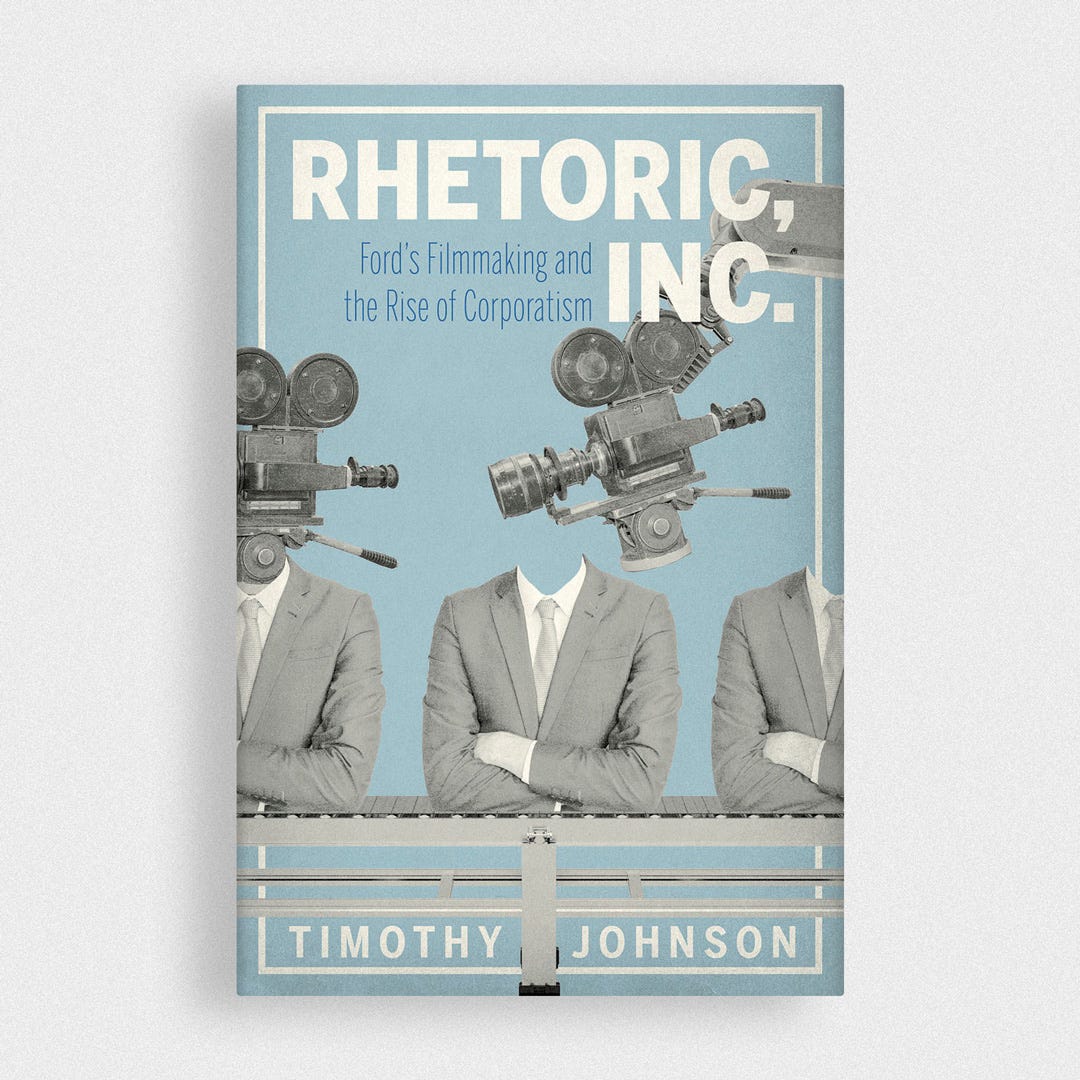How to Design A Book Cover: Rhetoric, Inc.
Sketches, Drafts, Revisions, and More
Hello! Welcome to How to Design a Book Cover, a series from A Book Designer’s Notebook in which I walk you through a particular cover design from start to finish. This is a bonus series for paid-tier subscribers.
This week, I’m sharing the process behind my cover for Rhetoric, Inc.: Ford’s Filmmaking and the Rise of Corporatism by Timothy Johnson. This is one of my earliest freelance covers—my first for a university press—and it is still one of my favorites.
The Brief
When I work with publishers, I receive a creative brief that usually shares a description of the book, technical specifications, potential art direction from the author, and art direction from the press itself. Here’s the description for this book:
In 1914, the Ford Motor Company opened its Motion Picture Laboratory, an in-house operation that produced motion pictures to educate its workforce and promote its products. Just six years later, Ford films had found their way into schools and newsreels, travelogues, and even feature films in theaters across the country. It is estimated that by 1961, the company’s movies had captured an audience of sixty-four million people.
This study of Ford’s corporate film program traces its growth and rise in prominence in corporate America. Drawing on nearly three hundred hours of material produced between 1914 and 1954, Timothy Johnson chronicles the history of Ford’s filmmaking campaign and analyzes selected films, visual and narrative techniques, and genres. He shows how what began as a narrow educational initiative grew into a global marketing strategy that presented a vision not just of Ford or corporate culture but of American life more broadly. In these films, Johnson uncovers a powerful rhetoric that Ford used to influence American labor, corporate style, production practices, road building, suburbanization, and consumer culture. The company’s early and continued success led other corporations to adopt similar programs.
Persuasive and thoroughly researched, Rhetoric, Inc. documents the role that imagery and messaging played in the formation of the modern American corporation and provides a glimpse into the cultural turn to the economy as a source of entertainment, value, and meaning.
For this one, the author provided some film screenshots they were going to include in the book. These didn’t work for the cover!
Notes & Sketches
I begin every book cover design inside my notebook. It’s important to note that for me, this stage begins with what is essentially a brain dump. There are a lot of bad ideas and basic connections that simply must come out of my head in order to make progress.
To represent the idea of corporate + filmmaking, one of my earliest ideas was to replace a suited man’s head with a film camera. This idea persisted through most of my drafts and the final cover.
(I think this project unlocked something in me—to this day I still make collages with cameras on people’s heads).
Digital Sketches
After marking up a few pages inside my notebook, my process usually involves the creation of several digital sketches in Photoshop. I’m not worried about perfection yet—this part of the process is about getting ideas and sketches from my notebook in and pursuing any new ideas I have in the process, and quickly. This usually results in a “sketches” folder with 20–30 covers of varying degrees of quality and completion. There are always stinkers.
Something to note about this cover is that I was doing it as a subcontracted gig under another designer who was also providing some options to the publisher.





